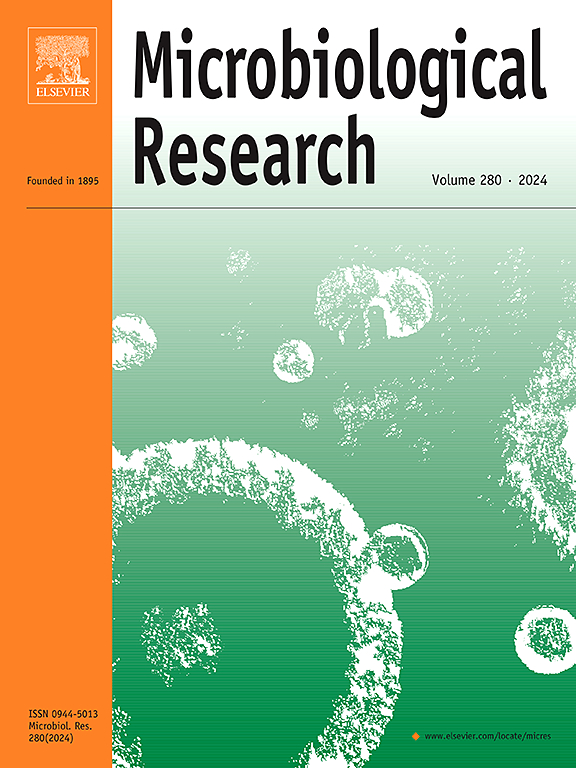Sphingomonas arvum sp. nov.: A promising microbial chassis for high-yield and sustainable zeaxanthin biomanufacturing
IF 6.9
1区 生物学
Q1 MICROBIOLOGY
引用次数: 0
Abstract
The yield of natural products from plants is currently insufficient and cannot be considered a sustainable and secure source of supply, especially given the challenges posed by global climate change. Therefore, a biofoundry that can quickly and accurately produce desired materials from microorganisms based on synthetic biology is urgently needed. Moreover, it is important to find new microbial and genetic chassis to meet the rapidly growing global market for high-value-added zeaxanthin. In this study, we aimed to identify the zeaxanthin biosynthetic gene cluster, crtZ-crtB-crtI-crtY, and confirm zeaxanthin production (11,330 μg g−1 dry biomass weight) through genome mining and liquid chromatography/mass spectrometry profiling using the novel zeaxanthin-producing bacteria Sphingomonas sp. strain BN140010T isolated from the subsurface soil of arable land. We report the highest yield among zeaxanthin-producing Sphingomonas strains to date. Moreover, we determined the taxonomic position of BN140010T using a polyphasic approach based on phylogenetic, physiological and chemotaxonomic characteristics, and we proposed Sphingomonas arvum strain BN140010T as a novel strain. Our results provide a zeaxanthin-producing chassis and diverse genetic tools for microbiological zeaxanthin production. Therefore, this research advances our progress towards the goal of lowering the unit cost of zeaxanthin production, making it more accessible for industrial applications.
Sphingomonas arvum sp:用于高产和可持续玉米黄质生物制造的前景广阔的微生物底盘
目前,植物天然产品的产量不足,不能被视为可持续和安全的供应来源,特别是考虑到全球气候变化带来的挑战。因此,亟需建立一个以合成生物学为基础、能够快速准确地从微生物中生产所需材料的生物工厂。此外,寻找新的微生物和基因底盘以满足全球快速增长的高附加值玉米黄质市场也非常重要。在本研究中,我们利用从耕地地下土壤中分离的新型玉米黄质生产菌 Sphingomonas sp. 菌株 BN140010T,通过基因组挖掘和液相色谱/质谱分析,确定了玉米黄质生物合成基因簇 crtZ-crtB-crtI-crtY,并确认了玉米黄质的产量(11,330 μg g-1 干生物量重)。我们报告了迄今为止产生玉米黄质的 Sphingomonas 菌株中最高的产量。此外,我们还根据系统发生学、生理学和化学分类学特征,采用多相法确定了 BN140010T 的分类学位置,并提出 Sphingomonas arvum 菌株 BN140010T 为新菌株。我们的研究结果为微生物生产玉米黄质提供了玉米黄质生产底盘和多样化的遗传工具。因此,这项研究推动了我们向降低玉米黄质生产单位成本的目标迈进,使其更易于工业应用。
本文章由计算机程序翻译,如有差异,请以英文原文为准。
求助全文
约1分钟内获得全文
求助全文
来源期刊

Microbiological research
生物-微生物学
CiteScore
10.90
自引率
6.00%
发文量
249
审稿时长
29 days
期刊介绍:
Microbiological Research is devoted to publishing reports on prokaryotic and eukaryotic microorganisms such as yeasts, fungi, bacteria, archaea, and protozoa. Research on interactions between pathogenic microorganisms and their environment or hosts are also covered.
 求助内容:
求助内容: 应助结果提醒方式:
应助结果提醒方式:


